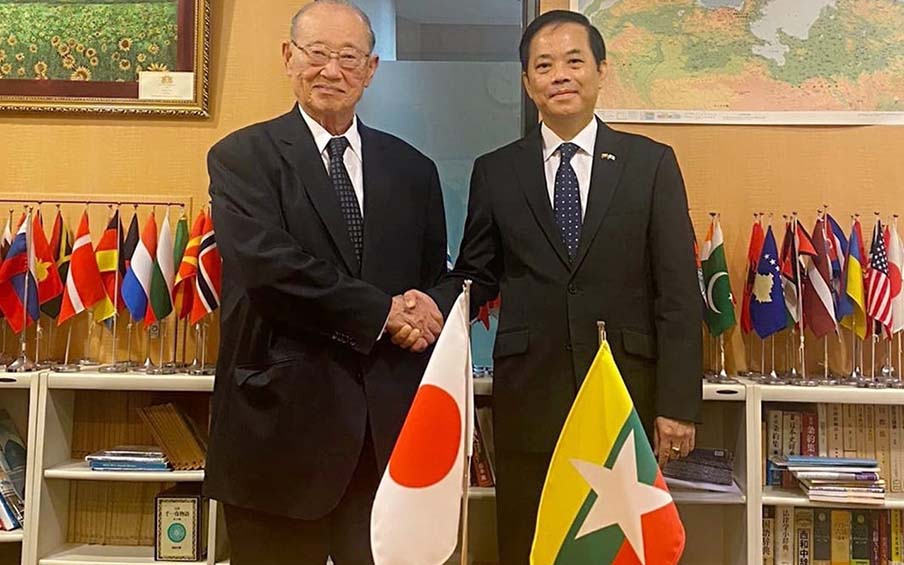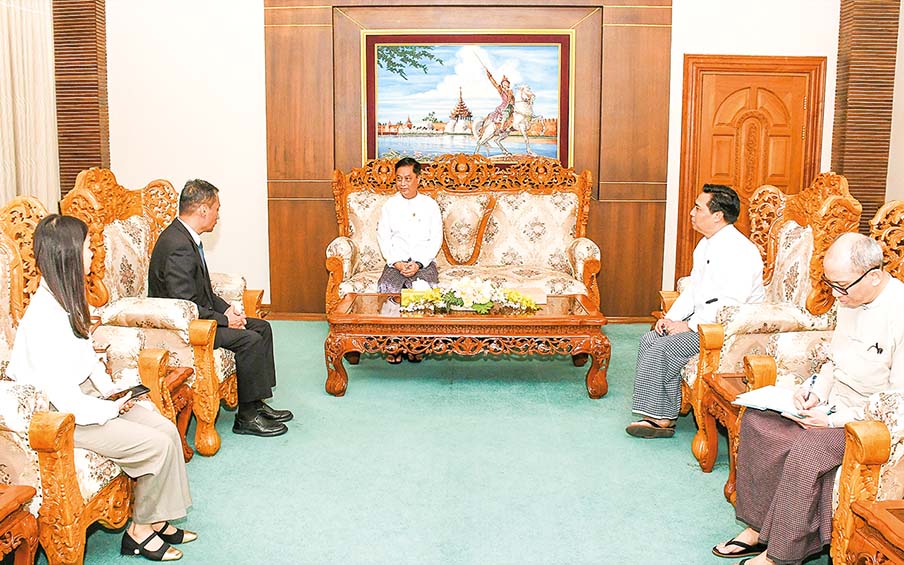Growing up in India, I would spend summer breaks visiting my grandparents in Kolkata. Each afternoon, my grandmother settled down on a floor mat, facing the family’s worship room, where stone idols of Hindu deities sat on little wooden thrones. For half an hour, she would sit still, her eyes closed, fingers rolling her prayer beads, chanting Krishna’s name in a barely audible whisper. As a little boy, I found this an opportune moment to tiptoe around her and help myself to the jar of delicious sweetened tamarind paste she kept on a shelf behind where she sat. But I never thought much about what she might be getting out of this daily ritual.
It’s impossible to know, objectively, whether those afternoon meditation sessions helped my grandmother achieve some sort of communion with a higher power, but a growing body of scientific evidence suggests she benefited from it in multiple ways. The practice was likely an effective approach for her to manage her stress. It may have also helped slow down ageing-related cognitive decline — a possible explanation for why she remained mentally sharp until the very end. It also probably enhanced her ability to cope with pain.
Defined most broadly as the exercise of focusing one’s attention on the current moment, meditation in some form has been practised for millennia within religious traditions around the world. Many contemplative practices are rooted in a quest for spiritual enlightenment, yet meditators have long believed their practice has health benefits. Over the past three decades, research has begun to confirm those health claims. One recent study determined that a daily practice of mindfulness meditation — which was defined as attending keenly to one’s thoughts and emotions for 45 minutes — relieved anxiety and acted as an antidepressant. Another found that mindfulness-based cognitive therapy — in which individuals learn to break negative thought patterns using breathing exercises and meditation — lessened the severity of treatment-resistant depression among adults who were still taking medication during the study.
In fact, as meditation’s popularity has grown along with awareness about the importance of mental health and stress relief, many are learning there are health benefits from doing breathing exercises for just a few minutes a day. Many US schools now have programmes that teach meditation to students, with the percentage of children ages four to 17 taking part in meditative practices such as mindfulness increasing ninefold from 2012 to 2017. Finding opportunities to learn and practice meditation has never been easier: Dozens of meditation apps such as Headspace and Calm offer people the option of using their smartphones — otherwise a source of distraction — to immerse themselves in sessions guided by instructors, with calming music playing in the background, at their own convenience.
“Twenty years ago, when I used to tell people I meditated, they would think I was in a cult or something,” notes neuroscientist Kathryn Devaney, executive director of the Berkeley, California, Alembic body-mind centre. “They would ask, what is that? And then something changed around six years or so ago. Now, when I talk to people about meditation, the response I get often is, ‘Oh, I know I should be doing that.’ And that’s so different.” Now, research aims to understand why meditating confers the benefits it does. Sara Lazar, a Massachusetts General Hospital neuroscientist, and her colleagues have done studies illuminating how meditation reduces anxiety, which has similar symptoms to stress. One compared two stress-reduction programs: one mindfulness-based, in which 42 volunteers learned awareness meditation and yoga practices for eight weeks, and the other exercise-based, where 25 volunteers did light aerobic exercises. Both groups performed a fear-conditioning task similar to exposure therapy, in which an anxiety-inducing stimulus is repeatedly presented in a safer environment until it no longer triggers anxiety. Volunteers were shown an image of a lamp that glowed blue, green, or yellow, receiving a mild electric shock with two of the colours. Later, the same image was presented to them without the shock to extinguish the “fear memory” and create a new “safety memory” associated with the lights.
Lazar and her colleagues found those who received the mindfulness-based stress-reduction training were better able to shed their fearful response to the shock-associated lamp colours. From brain scans, the researchers concluded that the volunteers’ training had changed how their brains processed the “safety memory”. They increased their ability to recall that the stimulus was no longer threatening.
Meditation’s benefits may extend beyond stress and anxiety reduction. Fadel Zeidan, a neuroscientist at the University of California, San Diego, studies how mindfulness can help reduce pain. In a recent study, Zeidan and colleagues used functional MRI scans of volunteers’ brains during meditation and pain to understand how meditation works to alleviate discomfort. Volunteers were assigned to two groups — one went through mindfulness meditation training, and a control group listened to a pretty tame book (The Natural History and Antiquities of Selborne, a classic of 18th-century nature writing).
First, the volunteers rated their pain after a hot probe pressed to their calf produced 100 seconds of intermittent heat pain across five minutes (they could move their leg away at any time). Then, they went through the same process again, but this time, the mindfulness group was asked to meditate during the painful heat, while those in the control group were asked to rest with their eyes closed.
Volunteers who meditated reported feeling less pain. “We see a 33 per cent drop in pain intensity and unpleasantness during meditation, while the pain levels in the control group actually go up,” Zeidan says.
Why does meditation provide relief? Zeidan says analysis of the meditators’ scans showed pain relief induced by meditation was associated with reduced activation in neural networks involved in self-awareness. The greatest decrease in activation is seen in the medial prefrontal cortex — a neural hub that plays a prominent role in self-reflection and valuing oneself. “During the meditation, the self-value is deactivating,” Zeidan says. “And the more it goes down, the greater the analgesia, the greater the pain relief.” The brain is still receiving pain signals, but “they are not going into the brain networks that are saying, this is my pain,” he explains. In essence, mindfulness appears to help detach the self from the suffering.
Last November, I travelled to a prison — a place presumably rife with stress. Yet I was at the Howard R Young Correctional Institution in Wilmington, Delaware, to watch meditation teachers from the International Association for Human Values lead a session for about 20 incarcerated men. IAHV was founded by spiritual leader Gurudev Sri Sri Ravi Shankar, who has popularized Sudarshan Kriya Yoga (SKY), a technique using rhythmic breathing to focus the mind. Like other forms of meditation, SKY promises to give practitioners the ability to stay calm and be less reactive in stressful situations. More than 800,000 imprisoned people and correctional officers in 60 countries have gone through the IAHV programme.
Some at the session I attended had already received training in the technique and were striving to apply it to their daily lives. (Prison authorities allowed me to interview them on condition I did not use last names.) I spoke to Jorge, a short man in his late 20s with a wispy beard and bright eyes, who was sent to the Wilmington prison for first-degree assault in 2016. He told me he was born in Puerto Rico and moved to mainland America at age five. Because he wasn’t fluent in English, his peers laughed at him in school. “I didn’t know how to respond,” he told me. So, he got into fights.
Jorge had heard about meditation years earlier while in a wrestling club. Somebody he knew there would meditate before matches and didn’t seem to get agitated, even when losing. “I used to wonder, how come I’m so mad and he’s always calm?” Jorge said. The question had been partly answered, he said, by what he had been learning in the prison meditation programme. And he’d begun applying that to his life. “When I feel like I’m getting flustered or angry, I just breathe,” he told me.
On a recent trip to my family home in Kolkata, I stood quietly outside the worship room, right where my grandmother used to meditate. It had been 20 years since she died. There was no jar of tamarind paste for me to steal from. At 51, I was far more weighed down by life’s stresses than I had been as a boy sneaking past my grandmother. Perhaps the time had come, I felt, to make it a daily habit to meditate.
Reference: National Geographic Magazine June 2024











